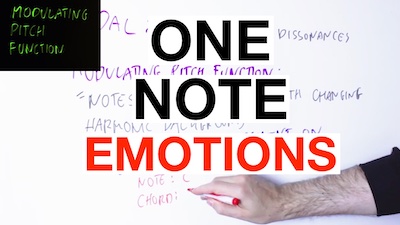What Is The EMOTION Of One Note? [Modulating Pitch Function]


We all know - or at least we should! - that music theory is not just about chords and scales…
… but is more about what emotions and feelings these chords and scales evoke in our audience and how to use them for maximum emotional impact.
It’s quite unfortunate that musicians seems to focus on the technical aspects of music theory rather than the emotional.
Just look at how musicians fight each other on things like “this is the correct naming of this chord/scale”…
I mean, who cares.
Then take the same musicians and tell them: “If I play a C note - just a C note by itself - what emotions does this provoke into a listener?”
Then watch them squirm…
…then follow up with: “How can I make this C note express different kinds of emotions?”
It’s incredible to me how even experienced musicians can’t answer these questions.
I’m not blaming them, I’m blaming how music theory is taught today…
… in fact I’m not even opposed to learn harmony and counterpoint and all that jazz, as long as we connect all that to emotions, not just some abstract mental construction.
In this video, we see together what is the emotion of a C note… and how to make the same C note express all kinds of emotions.
The funny thing is that it’s not hard at all!
Watch the video here:
If you like the idea of understanding emotions in music then I have more for you.
You could do well to watch this lesson too, and take note of your emotions while you do:
If you want to learn your harmony on guitar in a way that empowers you to express accurately the emotions that you want to express, then I recommend you to take the Complete Chord Mastery guitar course
This is not a book, it’s a complete video course - where you will learn how to play chords all over your fretboard, how to connect them, how to do chord substitutions and melody harmonizations.
All the theory is done straight on the guitar fretboard - no “piano examples” don’t miss it: Complete Chord Mastery guitar course
Did you find this video helpful? Do not miss the next Music Theory videos!
Subscribe to the MusicTheoryForGuitar YouTube channel by clicking the button below.